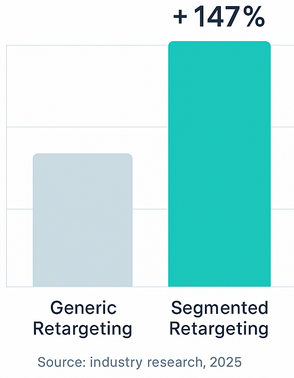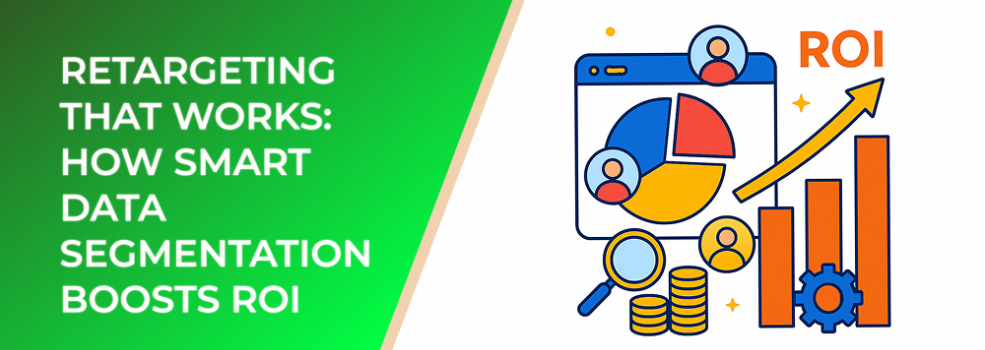Learn how precise data segmentation helps marketers reach warm audiences, reduce wasted ad spend, and drive measurable performance gains.
Why Retargeting Still Matters
Retargeting remains one of the most efficient tactics in digital marketing. It reconnects with users who have already interacted with your brand—visitors who browsed your site, engaged with your social posts, or started the checkout process but didn’t finish. The key to effective retargeting isn’t just showing ads again; it’s showing the right ad to the right segment.
According to industry research, retargeted website visitors are 70% more likely to convert compared to first-time visitors. Yet, many campaigns fail to deliver optimal results because they rely on overly broad audience definitions that dilute relevance and drive up costs.
The Power of Smart Segmentation
Smart data segmentation transforms generic retargeting into precision marketing. By dividing your audience into smaller, behavior-based segments, you can tailor ad messages and offers to each group’s stage in the funnel.

Conversion rate lift (≈ +147%) achieved by segmented retargeting vs generic retargeting
For example:
-
Cart abandoners respond well to dynamic ads showing the exact product they viewed.
-
Past purchasers can be segmented for upselling or cross-selling related items.
-
Engaged but non-converting visitors might respond better to educational content or testimonials.
This approach doesn’t just improve engagement—it ensures that every ad dollar is used to move the right people closer to conversion. Data shows that brands using advanced segmentation see up to a 25% increase in return on ad spend (ROAS) compared to non-segmented campaigns.
Making Data Work Harder for You
Effective segmentation depends on understanding three key data sources:
-
Behavioral data – Tracks user actions like page visits, clicks, or time spent on site.
-
Demographic data – Helps define who your users are based on age, gender, or location.
-
Engagement data – Captures how users interact with your ads and content across platforms.
Combining these datasets gives you a complete view of your audience and allows for more accurate personalization. The result? Smarter ad delivery, stronger engagement, and higher ROI.
Measuring Success
A segmented retargeting strategy should always be performance-driven. Key performance indicators (KPIs) such as cost per acquisition (CPA), conversion rate, and click-through rate (CTR) help evaluate which audience segments are performing best.
Recent analytics show that personalized retargeting can reduce CPA by up to 30%, while maintaining or improving overall conversion volume. With proper segmentation and testing, even small adjustments can lead to substantial performance gains.
Related Articles
Continue exploring audience optimization and campaign growth with these articles:

